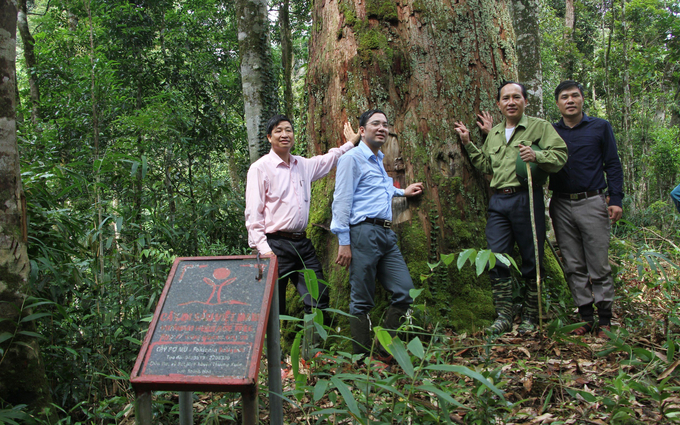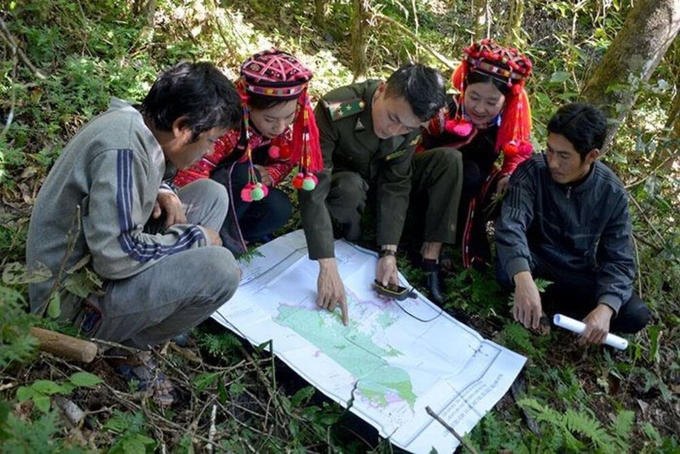December 5, 2025 | 14:49 GMT +7
December 5, 2025 | 14:49 GMT +7
Hotline: 0913.378.918
December 5, 2025 | 14:49 GMT +7
Hotline: 0913.378.918

The Xuan Lien Nature Reserve is set to be upgraded to a national park in the near future. Photo: Van Trieu.
According to Decision 895/QD-TTg issued on August 24, the new national parks are all upgraded from nature reserves. These include Muong Nhe (Dien Bien), Bat Xat (Lao Cai), Xuan Lien (Thanh Hoa), An Toan (Binh Dinh), Bac Huong Hoa, Dak Rong (Quang Tri), and Ea So (Dak Lak).
Thus, the national forestry planning aims to establish a total of 41 national parks across the country, primarily concentrated in the North Central region and the Central Coast (12 parks), as well as in the Northeastern and Northwestern mountainous areas and the Central Highlands (each with 8 parks).
Based on the Biodiversity Law of 2008, Vietnam currently has four types of nature reserves: national parks, nature reserves, species-habitat conservation areas, and landscape protection areas.
The criteria for classifying nature reserves are based on biodiversity levels, biodiversity values, and the scale of the area. Nature reserves are divided into national and provincial levels to ensure appropriate management and investment policies.
The key distinction of national parks, the highest level in the classification of nature reserves, compared to other categories, is that they serve as natural habitats, either year-round or seasonally, for at least one species listed in the Red List of endangered, threatened, or rare species prioritized for protection (IUCN).
Additionally, once designated as a national park, a nature reserve will have greater opportunities to attract investments focused on its ecological and landscape tourism values.
One of the nature reserves set to be upgraded by 2030, Xuan Lien, has been planning for this transition for several years. The reserve is also developing strategies to fully leverage its potential and strengths following the upgrade.
"The upgrade to Xuan Lien National Park will enhance efforts to conserve natural ecosystems, biodiversity values, and endangered, threatened, rare and endemic species in this area", said Mr. Pham Anh Tam, Director of the Xuan Lien Nature Reserve.

Staff at the Muong Nhe Nature Reserve are conducting investigations and assessments of the current state of the forest ecosystem. Photo: Hoang Chau.
In addition to the four types of nature reserves, according to the Biodiversity Law, special-use forests in Vietnam are further classified into three categories. Based on the Forestry Law of 2017, these include research and experimental forests, national botanical gardens and national seed forests.
The Forestry Law identifies scientific research as one of the key tasks to be conducted in special-use forests, alongside the conservation of natural forest ecosystems, forest genetic resources, the preservation of historical and cultural sites as well as scenic landscapes.
The research and experimental forests are a key component outlined in the forestry planning. According to the plan for the period from 2021 to 2030, with a vision for 2050, Vietnam will establish an additional 9 research and experimental forests.
Notably, the forestry plan also includes the establishment of 3 landscape protection areas that hold significant historical and cultural value for the country. These include: the General Vo Nguyen Giap Forest, covering 269ha in Phu Yen District, Son La; the Temple of King Le Thai Tong, spanning 16ha in Son La City; and Ta Thiet Region Command relic area, encompassing 517ha in Loc Ninh District, Binh Phuoc.
By 2030, Vietnam aims to have a total of 225 special-use forest areas, including 41 national parks and 30 newly established reserves. The total area planned for these forests is nearly 2.65 million ha, an increase of almost 200.000ha compared to the current figures.
Some forests are seeing significant increases in area, such as Phu Quoc, which has expanded by nearly 29.000ha (almost 100%), Kon Chu Rang with an increase of over 23.000ha (nearly 150%), Hoang Lien Van Ban growing by 20.000ha (over 80%), Cat Tien with more than 11.000ha (over 15%), and Muong Nhe, which has increased by nearly 10.000ha (almost 30%).
"The forestry planning reflects the value of people and communities", said Minister of Agriculture and Rural Development Le Minh Hoan during the announcement of the national forestry plan. He also urged local authorities to adopt a flexible mindset in order to fully utilize the multifunctional values of the forests.
Translated by Phuong Linh

(VAN) As of 2025, the ASEAN region has a total of 69 ASEAN Heritage Parks recognized across its 10 member states. Among them, Viet Nam contributes 15 ASEAN Heritage Parks.

(VAN) Yok Don National Park has high biodiversity with numerous endemic plant and animal species, and it is also the only dipterocarp forest ecosystem conservation area in Viet Nam.

(VAN) Viet Nam and Brunei signed two important MOUs on fisheries and IUU, expanding cooperation in agriculture, the environment, and Halal exports, aiming to substantively implement joint projects.

(VAN) The Viet Nam Coconut Association worked with the International Finance Corporation (IFC) and businesses to promote the supply chain, enhance competitiveness, and develop the coconut industry sustainably.
![Hue aims for Net Zero: [2] Pioneering low-emission tourism](https://t.ex-cdn.com/nongnghiepmoitruong.vn/608w/files/huytd/2025/12/04/0633-dulichzero-4-095634_236-161125.jpg)
(VAN) The ancient capital of Hue has developed Net Zero tourism products and models, aiming to reduce carbon emissions and pioneer the establishment of Viet Nam's green tourism destination.

(VAN) C.P. Viet Nam has announced the successful completion of its goal to plant 1.5 million trees during the 2021-2025 period, a key milestone within company's long-term ESG strategy and its roadmap for emission reduction.

(VAN) This is an initiative of MAE aimed at creating a unified coordination mechanism to implement agricultural cooperation programs with developing countries.